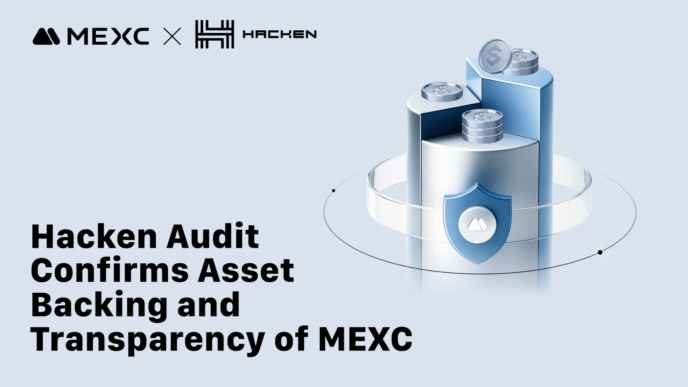Zero-day vulnerabilities are massive security flaws in software or hardware systems that neither you nor the vendor is aware of, and these can be prime vectors for cyberattacks. Moreover, patches for zero-day vulnerabilities may not be readily available, exacerbating cybersecurity threats to your business.
However, with sufficient planning and a security budget, you can protect your business systems and mitigate potential zero-day attacks. Let’s find out how expensive Zero-day threats can be to your business and what proper allocation of resources can do to help you mitigate losses and recover faster after such an attack.
Economic Impact of Zero-Day Vulnerabilities
Because of the unpredictable nature of zero-day vulnerabilities, they can cause untold damage to your business systems. For instance:
High Financial Losses
Your business may incur direct costs because of zero-day attacks. Besides direct damage to your business and the costs associated with downtime and remediation, you may also incur legal fees, remediation costs, and ransom payments.
Major attacks, especially those targeting critical business infrastructure, can cost billions of dollars worth of losses due to operational disruptions and remediation expenses. Additionally, your business may have to pay more in regulatory fines, legal fees, and compensation to users for loss of data or finance.
Operational Disruptions and Downtime
Outages of major business systems can halt your business operations, especially in healthcare, energy, finance, and manufacturing. Additionally, using legacy and outdated IT infrastructure exacerbates vulnerability, increasing the risk of catastrophic failures and prolonged recovery times.
Loss of Reputation and Customer Trust
Zero-day exploits can have intangible costs, including loss of customer confidence and brand reputation in your business. Not only will that lead to a loss of customers, but it will also lead to lost business opportunities and long-term revenue decline.
Security Spending Alignment Strategies
One way to prepare for potential zero-day attacks is to allocate a budget for them. AS a business, here’s how you can invest in strategies that help mitigate attacks or increase your recovery success rate afterward.
Adopt a Multi-Layered Defense Approach
The best way to anticipate and mitigate potential zero-day attacks is to cover all your bases. What better way to do this than to adopt a multifaceted approach to cybersecurity? You can take action in multiple ways:
- Although by definition, zero-day attacks lack patches, timely updates can harden your system against already known vulnerabilities and reduce your general attack surface. Ensure you do regular software updates and create a comprehensive patch management plan.
- Implement Zero-Trust Architecture (ZTA) with strict access controls. ZTA systems verify every access request to minimize lateral movement by attackers exploiting zero-day vulnerabilities.
- Employ the Principle of Least Privilege (PoLP) whenever you assign user roles in your organization. PoLP restricts user and system permissions to reduce potential damage from any zero-day exploit on your applications and edge devices.
- Install Advanced Threat Detection systems that can detect and remediate attempted intrusion attacks. Use AI-driven behavioral analytics, Endpoint Detection and Response (EDR), and microsegmentation to reduce the risk of lateral movement in your organization.
Address Organizational Vulnerabilities
Some vulnerabilities adversely affect your organization, especially if you still use legacy systems and integration points. In your budget, allocate sufficient resources to secure the intersection of old and new systems, which are common zero-day targets. Where possible, migrate your systems to cloud environments that use better cybersecurity tools to secure your data and business.
Additionally, set up controls to monitor and control unauthorized software and third-party components that may harbor vulnerabilities. Doing this prevents system exploits that may use phishing and other social engineering attacks to obtain credentials from your teams from being potentially compromised through unauthorized apps, websites, and edge devices.
Moreover, invest in security awareness training and foster communication between development and security teams to reduce human error. Training can help your teams identify and reject any intrusion attempts. It also helps them identify potentially unusual system behaviour and enact remediation measures effectively.
Develop Rapid Incident Response Capabilities
Prepare your teams to respond rapidly to zero-day incidents. You can do this in several ways:
- Develop and regularly update incident response plans specifically for zero-day scenarios. Doing this prepares your team to take systematic action to prevent and mitigate a successful zero-day attack on your business once anomalous behavior is detected in your systems.
- Conduct simulation exercises and penetration testing to uncover potential system vulnerabilities and patch them effectively.
- Use virtual patching techniques such as Web Application Firewalls (WAF) and Intrusion Prevention Systems (IPS) to shield vulnerabilities temporarily until official patches are available
Invest in Bug Bounty Programs
Invest in programs that use and reward ethical hackers for finding and reporting vulnerabilities in your systems. Responsible disclosure from ethical hackers in bug bounty programs can be more cost-effective than in-house researchers. It may also reveal potential weaknesses that internal teams may not easily identify on their own.
Invest in Backups and Data Recovery
Some zero-day attacks may involve vulnerabilities that revolve around data encryption, deletion, or manipulation. This is where backup and data recovery strategies become critical for your cybersecurity resilience.
Implement automated backup processes that capture frequent snapshots of key systems, databases, and endpoint files within your organization, minimizing your data loss window in case of an attack. Use immutable storage to prevent modification or deletion of backups after writing. Doing this protects backups from ransomware or insider tampering.
Use the classic 3-2-1 backup rule (3 copies, 2 different media types, 1 offline copy) to protect your backups in case of massive data loss in your organization.
Participate in Threat Intelligence Sharing and Collaboration
Information Sharing and Analysis Centers (ISACs) can be an excellent investment to make, as you can access information on common threats, patches, and potential zero-day attacks from threat intelligence communities.
By joining ISACs, you can:
- Share and receive real-time intelligence on emerging zero-day threats.
- Collaborate with industry peers and government agencies to enhance detection and response capabilities.
- Integrate threat intelligence feeds into security tools for proactive defense














